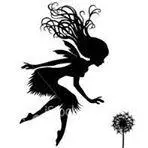Please scroll down for an English review.
כשמדובר ביצירה כמו "מלחמה ושלום" של טולסטוי, קשה להתחמק מהמעמד הכמעט מיתולוגי שלה , רומן עצום שנחשב לאחת מפסגות הספרות העולמית. כולם שמעו עליה, חלק קראו אותה, ורבים אחרים הסתפקו בתקציר או בעיבוד קולנועי. אבל האם באמת מדובר ביצירת מופת שקל להתחבר אליה גם היום, או שמא זהו מסע קריאה מפרך שבודק את גבולות הסבלנות של הקורא? בסקירה הזו אני בוחנת את היצירה מנקודת מבט אישית , בין קריאה להרהור, בין התפעמות לעייפות.
"מלחמה ושלום" נחשב לאחד מהרומנים הגדולים והשאפתניים ביותר שנכתבו אי פעם. טולסטוי פרסם את היצירה לראשונה בשנים 1865–1869, והיא משלבת סאגה משפחתית, רומן היסטורי והגות פילוסופית. הספר מציע דיוקן רחב יריעה של החברה הרוסית בתקופת המלחמות הנפוליאוניות (1805–1812), עם דגש על הפלישה הצרפתית לרוסיה ב-1812. עם זאת, אין מדובר ברומן היסטורי במובן המקובל, אלא בניסיון מרשים לפרק ולהבין את המנגנונים הפסיכולוגיים, החברתיים והפוליטיים של אותה תקופה.
במרכז הסיפור ניצב משולש אהבה שמורכב משלוש דמויות עיקריות, המייצגות טיפוסים שונים מהחברה הרוסית של אותם ימים: פייר בזוחוב, היורש האידיאליסטי והמבולבל המחפש משמעות בעולם מנוכר; הנסיך אנדריי בולקונסקי, חייל אצילי, קריר וציני, הקרוע בין חובתו למדינה לבין כמיהתו לחיים שלווים ואישיים; ונטשה רוסטובה, צעירה חיה ותוססת ממשפחת רוסטוב, שנסחפת בין אהבות, אכזבות וחיפוש אחר זהות עצמית.
הדרמות הרומנטיות והסאגות המשפחתיות של רוסטוב ובולקונסקי מעצימות את הקונפליקטים האישיים של הדמויות בתוך הסערה ההיסטורית. העלילה עוקבת אחריהם ואחר משפחותיהם במאבק לא רק מול הצבא הצרפתי, אלא בעיקר מול עצמם, טעויותיהם ותקוותיהם המנופצות.
מעבר לדרמות האישיות, טולסטוי מציג בפני הקורא את הזירה ההיסטורית של המלחמות הנפוליאוניות, והסיפור מגיע לשיאו עם הפלישה הצרפתית לרוסיה וקרב בורודינו. תיאורי הקרבות מפורטים ואותנטיים, אך טולסטוי מרחיב את הפריים גם מעבר לשדות הקרב: הוא שוזר תיאורים של נשפים חורפיים לצד הרהורים מעמיקים על חופש הרצון, מקומו של האדם בהיסטוריה, שאלות של דת, מוסר וגורל.
כך נוצר מצב שבו, לצד ניתוח מדוקדק של האבסורד שבמלחמה ושל חוסר האונים של האדם מול כוחות גדולים ממנו, טולסטוי מתמסר גם להירהורים פילוסופיים ממושכים , לא פעם על חשבון קידום העלילה. עבור הקורא, לעיתים התחושה היא של עצירה פתאומית לצורך נאום צדדי.
כיאה לרומן רוסי קלאסי, טולסטוי מאכלס את היצירה בדמויות משנה רבות ומפורטות, עד כי לעיתים קשה לעקוב אחר כולן. רבות מהן חוזרות ונשזרות בהמשך, אך הסבך הזה, לצד שמות ארוכים והטיות משתנות בהתאם למסורת הרוסית, גרם לי לא פעם לאבד את הידיים והרגליים. התחושה היא של מבוך דמויות שבו צריך מפה כדי לצאת ממנו בשלום.
מהדורה בעברית:
מלחמה ושלום (כרכים א'+ב)/ לב ניקולייביץ' טולסטוי
הקיבוץ המאוחד, 2015, 1060 עמודים

התחלתי את הקריאה בתרגום של לאה גולדברג, אך אחרי כמאה עמודים הרגשתי שאני קוראת גם את טולסטוי וגם לוקחת שיעור מאולץ בצרפתית. גולדברג בחרה להשאיר את המשפטים בצרפתית בגוף הטקסט ולהעביר את תרגומם להערות שוליים. ככול שהתקדמתי, מצאתי את עצמי עוברת שוב ושוב בין גוף הטקסט להערות השוליים, מה שפגע מאוד בזרימת הקריאה.
אמנם ברור שטולסטוי שילב צרפתית כחלק מהתיאור הריאליסטי של האליטה הרוסית דאז, אך עבור הקורא בן זמננו – זה יוצר קושי נוסף: גם התמודדות עם השפה של טולסטוי וגם גיחה תמידית להערות שוליים. לכן, החלטתי להמשיך לקרוא בתרגום לאנגלית, שהיה עבורי זורם ונגיש יותר.
לפני מספר חודשים קראתי גם את "אנה קארנינה". למרות שגם שם סיימתי את הקריאה מותשת, החוויה הייתה שונה בתכלית. "אנה קארנינה" הרגיש מדויק ואינטימי יותר, הדמויות היו נגישות והקונפליקטים , בעיקר סביב אהבה, נאמנות וחברה , דיברו אליי הרבה יותר. לעומתו, "מלחמה ושלום" נמשך ונפרש לממדים רחבים ולעיתים גם מייגעים. טולסטוי מרחיב את העלילה ומשלב בה פאתוס היסטורי עד שהעלילה האישית נבלעת בין הפרקים.
בסופו של דבר, "מלחמה ושלום" הוא גם יצירה מונומנטלית וגם מסע הישרדות לקורא. בדיוק כמו במלחמה, לא כולם חוזרים בשלום. אני לא בטוחה אם הספר היה שווה את המאמץ , הוא ארוך מאוד (בתרגום האנגלי שקראתי מדובר ב-1940 עמודים, ובתרגום החלקי של גולדברג כ-1,060 עמודים). אותי פחות עניינו תיאורי המלחמה, ולעיתים הרגשתי כי קווי העלילה האישיים פשוט טובעים תחת עומס היסטורי ופילוסופי. רק כאשר הספר מתמקד באותם רגעים שבהם הדמויות אינן מוצאות שלווה , באהבה, במשפחה או בחיים עצמם , הוא הופך להיות באמת מעניין.
War and Peace/ Leo Tolstoy
Kindle Edition, 2024, 1941 Pp
דירוג SIVI –
איכות אודיו –

When it comes to a work like Tolstoy’s War and Peace, it’s hard to ignore its near-mythical status — a colossal novel often hailed as one of the pinnacles of world literature. Everyone has heard of it, some have read it, and many others have settled for a summary or a cinematic adaptation. But is it truly a masterpiece that resonates just as strongly today, or is it a grueling reading journey that tests the patience of the modern reader? In this review, I explore the novel, balancing fascination and fatigue.
War and Peace is considered one of the greatest and most ambitious novels ever written. Tolstoy published the work between 1865 and 1869, weaving together a family saga, historical narrative, and philosophical inquiry. The book offers a sweeping portrait of Russian society during the Napoleonic Wars (1805–1812), focusing on the French invasion of Russia in 1812. Yet, this is not a “historical novel” in the usual sense but rather an impressive attempt to deconstruct and understand the era's psychological, social, and political mechanisms.
At the heart of the story stands a love triangle composed of three main characters, each representing a different archetype within Russian society of the time: Pierre Bezukhov, the idealistic and confused heir searching for meaning in an alienating world; Prince Andrei Bolkonsky, a noble and cynical soldier torn between duty to his country and his longing for private, peaceful life; and Natasha Rostova, a lively and spirited young woman from the Rostov family, swept away by love, disappointment, and the search for her own identity.
The romantic entanglements and family dramas of the Rostovs and Bolkonskys intensify the characters' struggles against historical turmoil. The narrative follows them and their families as they battle not only the French army but, more profoundly, themselves—their mistakes, broken dreams, and the pride that defines them.
Beyond these personal dramas, Tolstoy presents the reader with the grand stage of the Napoleonic Wars, culminating in the French invasion of Russia and the Battle of Borodino. The battle scenes are detailed and authentic, but Tolstoy broadens the frame beyond the battlefield: he intertwines depictions of glittering winter balls with profound reflections on free will, man’s place in history, and questions of faith, morality, and fate.
This leads to a dynamic in which, alongside meticulous analysis of the absurdity of war and the helplessness of individuals against vast historical forces, Tolstoy also indulges in extended philosophical meditations, often at the expense of narrative momentum. At times, reading feels like an abrupt halt for an impromptu lecture.
True to the tradition of Russian literature, Tolstoy populates the novel with many rich secondary characters, making it difficult at times to keep track of them all. Many reappear later and are woven back into the plot, but this complexity, compounded by long names and changing suffixes, as per Russian custom, occasionally disoriented me. It often felt like navigating a maze of characters where one needs a map to find the way out.
I began reading the novel in Leah Goldberg’s Hebrew translation, but after about a hundred pages, I felt like I was reading Tolstoy while also taking an impromptu French lesson. Goldberg chose to leave the French sentences in the body of the text and place their translations in footnotes. As I progressed, I constantly jumped between the main text and the bottom of the page, which disrupted the reading flow considerably.
Tolstoy incorporated French to depict the Russian aristocracy of the time realistically. Still, this presents an additional challenge for today's reader: grappling with Tolstoy’s prose while continually referencing footnotes. Consequently, I switched to an English translation, which felt more fluid and accessible.
A few months ago, I also read Anna Karenina. While I finished that novel equally exhausted, the reading experience was fundamentally different. Anna Karenina felt sharper and more intimate; the characters were more accessible, and the conflicts, primarily revolving around love, loyalty, and society, spoke to me on a deeper level. In contrast, War and Peace sprawl into vast dimensions, sometimes to the point of exhaustion. Tolstoy expands the narrative and layers it with historical grandeur until the personal storylines seem to disappear beneath the weight of it all.
Ultimately, War and Peace is a monumental work and a survival test for the reader. Much like in war, not everyone makes it back in one piece. I’m still unsure if the novel was worth the effort, it is exceptionally long (the English translation I read spans 1,940 pages, while Goldberg’s partial Hebrew translation is around 1,060 pages). I was less engaged by the war and battle descriptions, a nd often felt that the personal narratives were drowned out. Only in moments where Tolstoy focused on the characters’ inability to find peace, in love, in family, or in life itself, did the novel truly captivate me.
לגלות עוד מהאתר Sivi's Books
Subscribe to get the latest posts sent to your email.

